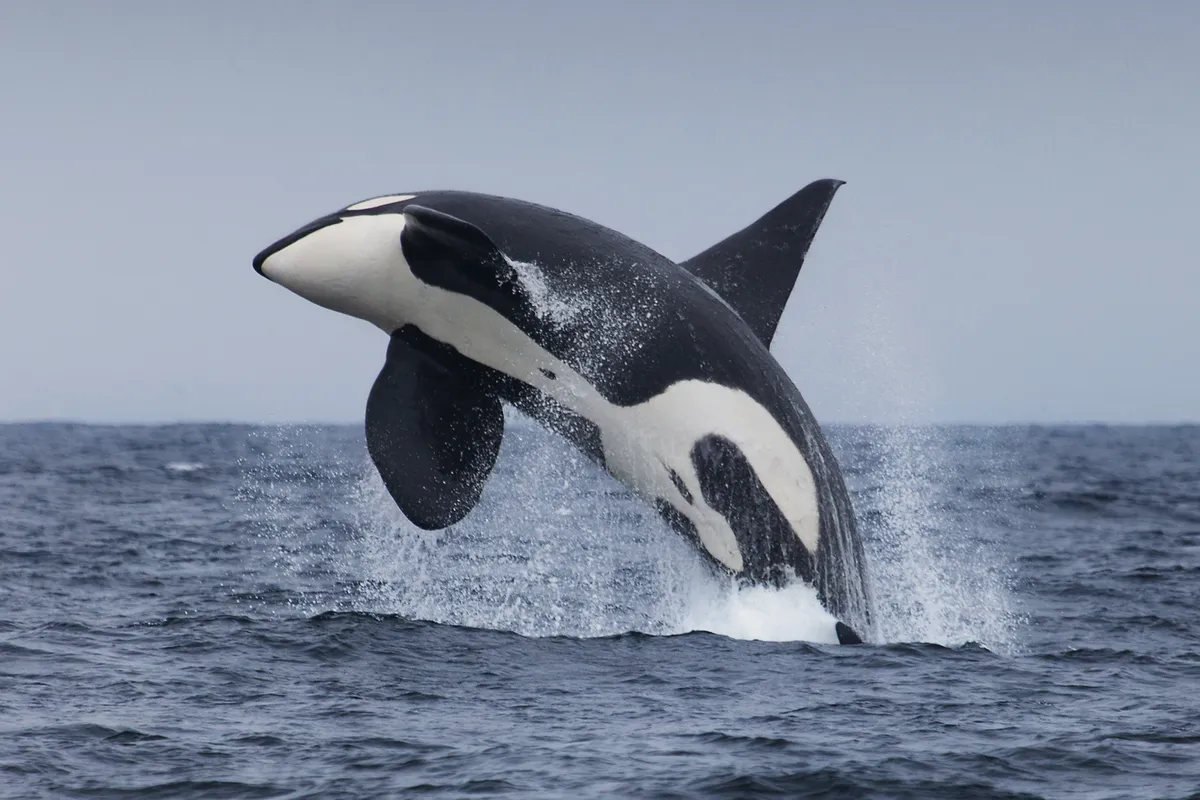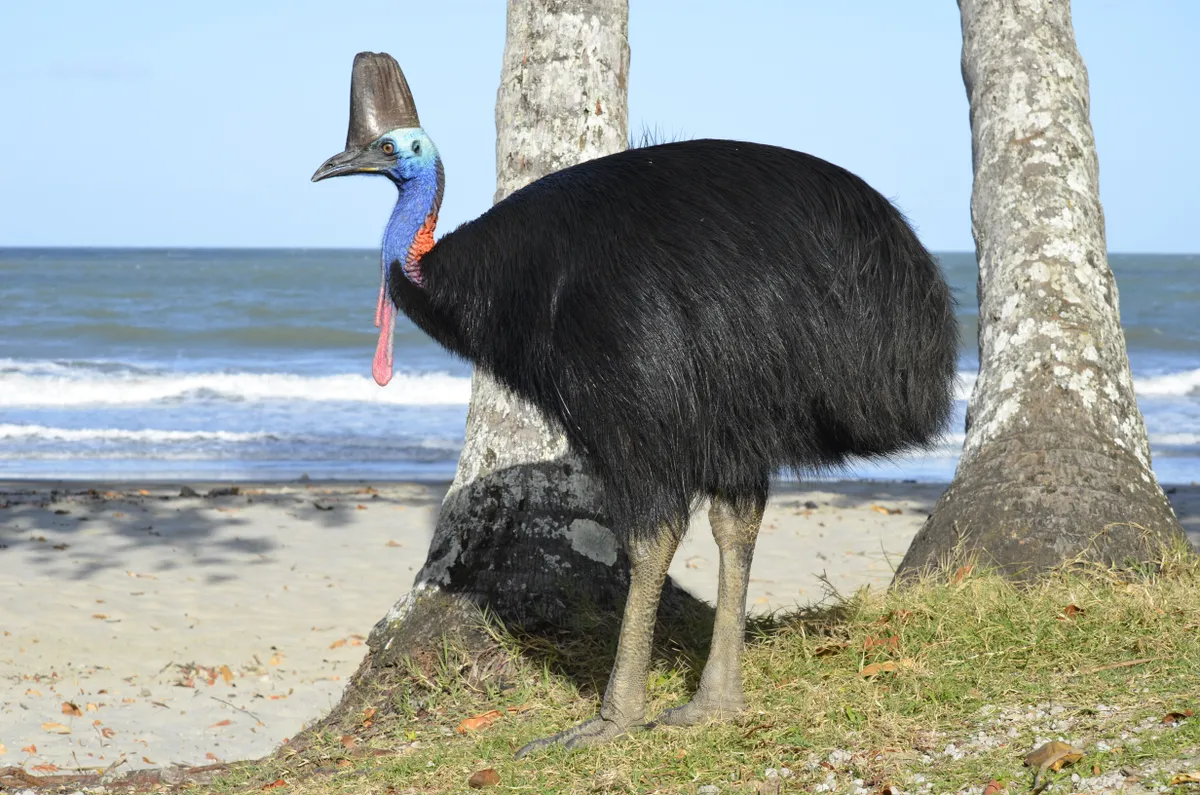Some of the most ferocious predators in the world are also some of its most attractive animals – a marriage of stunning looks and lethal power, says Sheena Harvey.
!0 most beautiful killers in the world
Bengal Tiger (Panthera tigris tigris)

Nothing sums up majestic beauty and dangerous killer more than the Bengal tiger. Our spirits lift at the sight of a familiar pussycat face, soft fur and perfect, eye-catching markings but woe betide anyone who approaches to stroke that magnificent head.
Bengals are the largest big cats in the world, weighing up to 260kg (570lb) when fully grown. They use this weight to dominate their prey. Rather than going in for lengthy chases, they approach their meal stealthily from behind or the side, getting as close as possible before pulling them down and clamping their jaws round their throats to suffocate.
- Not all cats hate water: Meet the wild cats – big and small – that are expert swimmers, including one that can swim underwater
- 10 deadliest cats in the world: Which felines are the best killers and which attack humans?
Although these tigers will consume hares, porcupines and other small mammals, they survive on a famine and feast regime, so their favoured prey is much larger - sambar deer, water buffalos and wild boar.
As man has moved closer to tiger habitat the animals have also included domestic livestock in their hunts. Humans also fall victim to Bengal tigers, but instances are rare and usually connected to encroaching on an animal’s dwindling territory.
Peregrine Falcon (Falco peregrinus)

One of the most stunning birds of prey with their distinctive facial ‘teardrops’, gimlet eyes ringed in white, blue-grey upper plumage and delicately flecked, white or biscuit-coloured breasts.
Their bright yellow talons are their killing tools, coupled with the force generated by their breathtakingly fast aerial dives as they smash into their pigeon meal. These stoops, as the dives are known, have been recorded at 200mph (320km/h), with one bird clocked by researchers at an incredible 242mph (389km/h).
- It's the fastest animal in the world and its deadly claws can catch prey mid-air: Meet one of the world's most incredible birds of prey
- Fierce, majestic and deadly: your ultimate guide to the world's biggest birds of prey
Peregrines are some of the most globally widespread raptors, found from polar regions to tropical rainforests. They are highly adapted hunters with small bony tubercles inside their nostrils that direct the extreme airflow away from their respiration system as they dive. This means the birds can breathe as they plummet because what would otherwise be intolerable air pressures are reduced.
Orca (Orcinus orca)

The beautiful and formidable killer whale. Who could fail to find their bold black and white patterning attractive as they glide effortlessly through the cool coastal waters of the northern and southern oceans? They beguile with their intelligence and the way they form packs and coordinate their movements to corral their prey.
- Are killer whales dangerous to humans?
- “No other predator is able to challenge them” – this deadly, intelligent ocean killer works in a team to stun, submerge and launch at its prey
Apex predators and superbly adapted killing machines, they hunt down seals, large fish, sharks and rays and even some species of whales. Their cooperative hunting techniques help them bring down animals much larger than themselves and their strong teeth and powerful jaws make short work of the catch.
Despite the colloquial name, orcas are not true whales, but members of the dolphin family, with excellent eyesight and hearing and a delicate sense of touch. In common with their dolphin cousins they have finely tuned echolocation that enables them to identify objects in the water, including humans who they have been known to approach with curiosity.
- Why are killer whales offering us food?
- Whale vs dolphin: what's the difference between these mysterious denizens of the ocean?
Lionfish (Pterois species)

The bright ginger and white stripes of the Indo-Pacific lionfish – one of the deadliest animals in the ocean – circle the body and then extend in horizontal rings up the flamboyant, feathery dorsal spines. The fan-like pectoral fins and tail are webbed with a spotty, semi-transparent gauze. The fish hovers serenely about the tropical reef system, floating gracefully in the currents.
- Weirdest fish: Meet the strangest fish in the world, including one that can incredibly live out of water for more than two months
- The deadliest fish on the planet: you won't want to meet these fearsome species underwater
They are a gorgeous flowery bundle of death, though, because those spines are highly venomous. Their static poses and slow, deliberate movements give no hint of their deadly nature as they can consume small fish and crustaceans with lightning-fast strikes.
- Most beautiful fish: Are these 8 species are the ocean's most stunning fish?
- The prettiest sea animals in the world: Meet some of the most beautiful - and sparkliest - creatures in the ocean
Lionfish have specialised swim bladders that enable them to precisely hold themselves in the water while they wait for their prey to swim past. Then they puff out spurts of water to alter the course of the fishy meal to face the waiting mouth.
In their native waters they are a natural part of the ecology, but they have been introduced to the Caribbean where nothing preys on them to control their populations. As they are decimating small fish numbers, biologists are attempting to train certain Caribbean species to recognise lionfish as prey and locals are encouraged to fish them for sport and to eat, after carefully removing the spines, of course.
Spiny, or Hairy, Bush Viper (Atheris hispida)

If anything looks like the dragons of storybooks it’s this photogenic snake from central Africa – Uganda, Kenya, Tanzania and the Democratic Republic of Congo. Their brightly coloured bodies can be a combination of pale yellow, green, blue and brown.
They are covered in long, thick scales that stand up like leaves along a twig and give the animals the appearance of a pretty decoupage. And their cute snub noses and shaggy plates on their heads are reminiscent of a small boy with unruly hair.
Spiny bush vipers are slender and quite short in snake terms, only about 2ft (60cm) long. Because they live in trees and bushes their tails are prehensile so that they can grip the branches and conceal themselves amongst the flowers. They have good vision and smell and can sense even small vibrations, so they are well placed to ambush passing prey.
Curiously spellbinding as they may be, their broadish heads house venom glands and their bite can cause severe internal haemorrhaging and death.
African Painted Dog (Lycaon pictus)

Adorned with a unique patchwork of black, yellow and white fur, the African painted dog is a native of the savannah regions of sub-Saharan Africa. Their noble heads with their central black stripe are topped by enormous, almost cartoon-like ears that give them an endearing appearance. They remind us of domestic dogs and arouse the same feelings of warmth and companionship.
- Remembering African Wild Dogs: Beautiful photographs of this wild canine, also known as painted dogs.
- It may look like a dog, but don’t be fooled – Africa’s most efficient killer, which can travel up to 72km/h, is neither a wolf nor a dog
However, beauty and what humans could perceive as cruelty combine in these canines. African painted dogs hunt in packs using sheer numbers to overwhelm their antelope prey. Their strategy is to repeatedly bite the victim’s legs and hindquarters as they try to escape. Eventually, they tire and drop to the ground where the dogs can reach them to make the kill. This technique is necessary in the dogs’ harsh environment and proves effective even on much larger prey. A pack has been known to bring down a 250kg (550lb) wildebeest, for instance.
They eat very quickly, as to linger would put them in danger of larger predators such as lions, once the smell of blood alerts them. They can completely consume a carcass down to the bone in 15 minutes.
Cone Snail (Conidae)

Seashells are visually captivating in their variety of shapes, patterns and colours, and none more so than the shells belonging to the cone snail family. Shaped like spinning tops and varying in size from a thimble to an ice cream cup, they have showy exteriors of patchwork, spots, spirals and stripes in yellows, greens, russets and purples.
These compelling exteriors hide a vicious secret, though, as all cone snails pack a powerful, poisonous sting. Their radula tooth, which in other molluscs is used like a tongue to scrape algae from stones or flesh from bones, is modified into a barbed harpoon that the animals can deploy at lightning speed to attack prey or defend themselves.
- Molluscs: Discover the fascinating world of these slimy alien lifeforms
- Why do some molluscs have beautiful shells?
The nerve-damaging venom of the cone snail is so powerful that it’s said that some species can kill a human in under five minutes.
Orchid Mantis (Hymenopus coronatus)

This exquisitely delicate pink and white insect is a master mimic of an orchid flower. It lives amongst the blossoms it imitates, its colours and the shape of its specifically designed flattened limbs blending into the petals. It sits, swaying in the wind, perfectly concealed until its prey – a small fruit fly or cricket – happens by.
Orchid mantises have an ethereal beauty that belies their savagery as they use the spikes on their two forelegs to dig into the prey and hold it while they eat it alive. This strategy works well for the mantis but it also plays an important part in the lifecycle of the orchid plants. The small black dot on the end of the mantis’ abdomen resembles a fly, which encourages other flies to believe the flower is a safe environment. More flies attracted to the blossoms means more opportunities for pollination. As there are a finite number of flies a mantis can deal with at any one time, the job of perpetuating the orchid species is ensured by the ones that escape.
Cassowary (Casuarius casuarius)

The southern cassowary has been labelled ‘the world’s most dangerous bird’ yet it is strikingly attractive due to its brilliantly coloured neck plumage and wattles and the showy casque on its head. It has been theorised that this bony outgrowth of the bird’s skull is used to amplify the low-frequence boom noise that the animal makes to communicate with others of its species hidden in the jungle undergrowth. But recent research has also suggested that the casque may be a form of heat regulation device.
Cassowaries, like those other comparable flightless birds, ostriches, emus and rheas, are generally non-aggressive and tend to be shy and retiring in their forest home. They have earned the description of ‘dangerous’ because if their chicks are threatened or they are provoked by humans or dogs, they are deadly. Kicking is the primary form of defence for all these large birds, but the cassowary is equipped with a razor-sharp first toe on the inside of its foot that can be 5in (125mm) long. Combined with a high kick, this stiletto-like claw can tear a body open in a second.
- Flightless birds: how did some birds lose their ability to fly?
- Discover the biggest, heaviest birds in the world: Towering giants that don't always get airborne
Clouded Leopard (Neofelis nebulosa)

Dwelling in the forests of southeast Asia, the clouded leopard’s coat is an artistic masterpiece of dull gold and random smoky patches lined in cream, almost like a living mosaic. The patterning has been compared to dreamy cloud formations, hence the name.
Given their beauty, it’s little wonder the animals’ skins have been prized in the past to make expensive fur coats. Even today, poaching for the illegal fur trade is one of the primary causes of a decline in clouded cat numbers, along with habitat loss in the forests of southeast Asia and the foothills of the Himalayas.
Clouded leopards have charismatic faces with neat little ears and a wistful expression. Their small size and tendency to purr place them in the same position as domestic moggies in our minds. But with their exceptionally long canine teeth they are undoubtedly top predators, tracking and disposing of monkeys, birds and small mammals, and not likely to curl up on anyone’s lap!
- The world's smallest leopard is also one of the Earth's rarest cats: Discover the secrets of the beautiful Arabian leopard that's on the edge of extinction
- 8 unlikely killers, from tortoises to beavers: Think apex predators are the most dangerous animals to humans? Think again!
- 10 deadliest countries for wildlife – including the one where Gustave the 'man-eating' crocodile
- Deadliest poisons found in nature – including the most lethal mushroom you might find the woods






